On October 26, 1955, Austria officially proclaimed its permanent neutrality, with the Federal Constitutional Law, stating that
“For the purpose of the permanent maintenance of her external independence and for the purpose of the inviolability of her territory, Austria of her own free will declares herewith her permanent neutrality which she is resolved to maintain and defend with all the means at her disposal.“
Austria’s perpetual neutrality was not declared in relation to a specific war at the time but rather as a commitment to refrain from engaging in future wars. Perpetual, thus, does neither mean it can never be changed nor that it holds forever.
Today, Austrian neutrality consists of three specific elements: the country must not engage in wars, must not be part of military alliances and must not allow the establishment of foreign military bases on its own territory.
However, contrary to the common opinion that Austria’s neutrality is enshrined in its constitution and bound to the state treaty, the country’s “perpetual neutrality” does not mean that its status cannot be changed. In fact, Austria’s permanent neutrality can be abolished without changing the constitution and without holding a national referendum.
Nonetheless, for decades, Austria’s neutrality has been deeply embedded in Austrian national identity and considered an untouchable and unquestionable cornerstone of Austria’s existence, for its citizens and politicians alike. It is a topic rarely picked up and questioned by politicians due to its decade-long tradition, its history and largely indisputable support among the Austrian general public.
The country’s neutrality is insofar interesting and unique, as it still allows for heavy engagement in international affairs, which is also exemplified by its membership in the European Union, an international actor that is in and of itself not neutral. As such, Austrian neutrality was even considered “incompatible” by the European Commission when the country first applied to join the EU in 1989, although Austria was admitted to the EU in 1995 after all.
Over the years, EU treaty changes and specifically the introduction of a mutual defence clause under Article 42.7 in the Lisbon Treaty naturally made it all the more questionable whether the country’s proclaimed neutrality would not clash with the Article‘s conditions and how it could live up to its duties, as typically narrow definitions of Austrian neutrality would still render it at odds with its membership in the bloc.
As the EU has been moving in the direction of establishing more independent common security and defence capabilities over the past years, Austria’s being as a neutral actor is further challenged and makes its proclaimed neutrality’s compatibility with being an EU member again questionable. However, it was not before Russia’s invasion of Ukraine that domestic debates about this contentious aspect of Austrian identity once again picked up.
New Geopolitical Factors
Russia’s full-scale invasion of Ukraine in February 2022 not only changed the European security order in the long term, and in particular the security prospects of the Central and Eastern European region, but also reinvigorated domestic debates about Austria’s untouchable yet often challenged neutrality. Besides, it led to an uptick in support for the North Atlantic Treaty Organisation (NATO) across the EU and even the formerly militarily unaligned EU member states Sweden and Finland were quick to change their minds and apply for NATO membership.
And yet, as neutrality and military non-alignment are deeply embedded in Austria’s identity, the country remains firm in its desire to keep its neutrality with two-thirds of its population opposing prospects of joining NATO. According to a 2022 survey, 70% of the population regard the county’s neutrality as “very important”, and 21% as “rather important”. Interestingly, the number of people who consider Austria’s neutrality as “very” or “rather important” rose by 10% since 2019.
The majority of Austrian politicians are equally vocal in defending the country’s neutrality. In February 2023, chancellor Nehammer declared in parliament that “Austrian neutrality is peace policy in action — it is a defensive neutrality”. Today, this stance is only questioned by a few lawmakers, among them the leader of the Neos party, Beate Meinl-Reisinger, who argues that Austrian neutrality is, in light of Russia’s aggression towards Ukraine, not maintainable anymore – at least not as it is often interpreted and deployed today.
Most recently, a number of experts and public figures called for the reconsideration of Austrian neutrality in a second open letter, after none of the suggestions laid out in their first one was implemented. The pundits argue that Austrian politics and society live under the illusion that they can stay out of conflicts – which so far may have been reasonable. Located at the heart of Europe and surrounded by NATO and fellow EU members, Austria may feel particularly secure. This is also reflected in the assessment of the capabilities of the Austrian Armed Forces, the “Bundesheer”: While renowned for their operations in the area of disaster relief, their “combat readiness and capabilities (…) would not allow it to conduct any war-fighting operation”, as stated in an essay by Gustav Gressel, a military expert and senior policy fellow at the ECFR. The assessment thus suggests that Austria, through its lived permanent neutrality and as a member of the EU, did not deem it necessary to invest in its military capabilities. Moreover, the country’s military has been subject to budget cuts over the years, in line with the thinking that the state, located in the heart of Europe and surrounded by NATO and EU members, would not need serious military defence capabilities.
And yet, Austria’s defence should not rest on the fact that a “neutral” country can solely rely on neighbours and fellow EU member states in its national defence strategy. Moreover, Russia’s invasion of Ukraine and the European response to it should have demonstrated that the country’s neutrality can only be reasonably defined as a military, not a political one.
Consequently, Austria should acknowledge that it needs to redefine how its neutrality policy is to be interpreted and that, as a member of the EU, it cannot continue hiding under its supposed neutrality and use it as a smokescreen.
Neutrality as a Smokescreen
Hiding under the cloak of neutrality, Austria is often quick to point to it when the country does not want to engage in certain policies or actions – such as the EU’s mutual defence clause, or more recently, in debates around supplying arms to Ukraine or providing training to Ukrainian armed forces. At the same time, the country uses its “neutrality” also as a defence argument to either justify engaging with certain actors like Russia or not taking a definite position on a specific matter at all.
Although Austria has, so far, adopted every EU sanction package against Russia since Russia’s full-scale invasion of Ukraine, it still used its proclaimed neutrality as a smokescreen to justify its positioning towards Russia, Ukraine and the war. It moreover shows that there is little consensus on how Austrian neutrality is to be interpreted.
A prominent example of this is how lawmakers from the far-right FPÖ walked out of the Parliament in March 2023, when Ukrainian president Zelenskyy held a televised speech more than a year after the start of Russia’s war and after he had done so in virtually every other EU country. Placing signs stating “Space for Neutrality” and “Space for Peace” on their seats, these parliamentarians plainly (mis-)used Austrian neutrality to justify boycotting the Ukrainian president’s speech. With that, however, they demonstrated how the “neutrality argument” is often employed to justify questionable acts and that, sometimes, defending such actions by claiming to be neutral is ill-advised: it shows that Austria is at best, apathetic, and at worst, the very opposite of being a neutral actor and instead, appeasing a dictator who rages a brutal war on another country. This is not how Austria’s neutrality should be employed, nor how it was intended to be.
Austrian pro-Russia, far-right lawmakers walk out as Ukraine’s President Volodymyr Zelenskiy gives a speech to Austria’s parliament https://t.co/NOHQPp2B4x pic.twitter.com/2lx55HljuR
— Reuters (@Reuters) March 30, 2023
However, while the walkouts from the FPÖ should not be surprising as they have been known for their Russia-friendly stance, the boycott of the whole session by half of the social-democrat SPÖ lawmakers, including the absence of its leader, Pamela Rendi-Wagner, albeit allegedly due to sickness, was more astonishing. According to rumours, Zelenskyy’s speech in the parliament has been subject to a lot of heated debate among social democrats, some of whom enjoy business ties to Russia and others who take Austria’s neutrality very literally and would like to interpret it not only as military but also as political neutrality.
Although defence minister Claudia Tanner emphasised in an interview with Euractiv that although Austria is “militarily neutral according to our constitution and legal regulations, we are certainly not politically neutral when it comes to Ukraine,” this recent eclat, which made international headlines, shows differently. In addition, recent news about the Austrian Raiffeisen Bank International’s continuous involvement in Russia again raises questions over how seriously Austria takes its obligations to adhere to these economic measures and more generally, its continuous engagement with Russia, an important gas supplier to the country.
As a defence, Austrian politicians like to reiterate their wish to keep channels of communication with Russia open, as they consider Austria to be a bridge between the East and the West. However, this further feeds suspicions of Austria being more pro-Russian than it likes to admit. Besides, the argument of Austria being a “bridge between East and West” is insofar outdated, as it comes from a time when Austria was considered a neutral ground for international negotiations. Due to its membership in the EU, which is a political, outspoken, western-oriented international player, this image of Austria as a politically neutral actor and negotiator is thus flawed.
Overall, Austrian politicians’ rhetoric about and their use of Austria’s neutrality demonstrate that there are serious discrepancies in how neutrality should be defined versus how it is nowadays employed in the country’s international relations. Moreover, there seems to be a misunderstanding of the difference between neutrality law and neutrality policy. Austria’s neutrality does not prevent it from engaging in international affairs, does not force it to be politically neutral, and does not get in the way of, for example, allowing Ukrainian President Zelenskyy to hold a televised speech in the Austrian parliament.
Quo Vadis, Austrian Neutrality?
As fittingly described by journalist Robert Misik: contrary to Austria’s previous “neutrality policy”, the country is nowadays, at best, “neutral, but without a policy”. Austrian neutrality, as is interpreted and lived today, is neither politically tenable nor compatible with its involvement in Western institutions.
Once Sweden joins Finland as the two youngest members of NATO, Austria remains one of the few EU countries, and the only one in central Europe, outside of the alliance. While this does not mean that Austria should (or must) join NATO – currently almost 70% of Austrian citizens are against it – the small alpine republic will need to find its place within the broader European security architecture. In fact, 66% of the Austrian population is in favour of increasing cooperation with EU member states in matters related to security and defence, which shows that there is some common ground that politicians in Vienna are able to build on. This positioning within the broader European security architecture is particularly crucial as the EU is likely to further advance its strategic autonomy in military, security and defence matters in the near future, specifically in light of a potential retreat of the United States as the protecting power of Europe.
In short, a serious rethinking of and a broader national debate on how the country’s neutrality can be lived in the 21st century is overdue. Austria needs to redefine its neutrality and come to a commonly accepted interpretation of what this “neutrality” actually means, what it entails, and how it is to be lived. Eventually, the government needs to create a coherent strategic framework for how Austria’s neutrality is to be interpreted and exercised as a member of the EU and a small country in a fast-changing world. While Austria’s commitment to military neutrality can be respected, its use of neutrality as a cloak to make the country appear politically neutral cannot.
Submit here

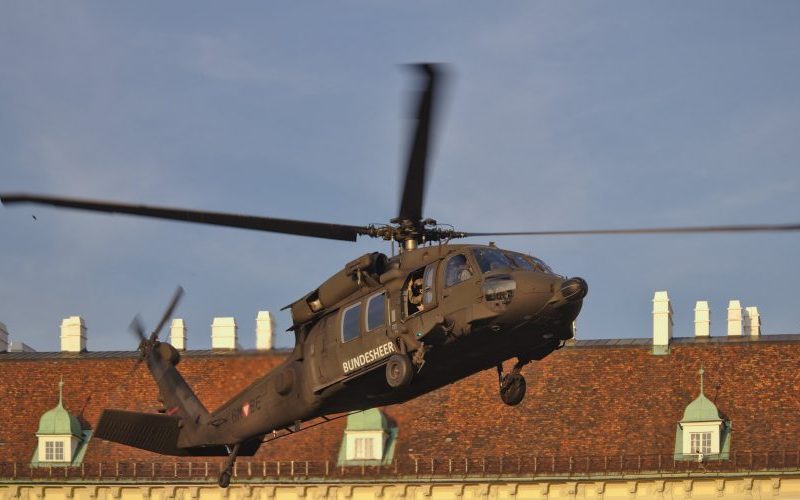
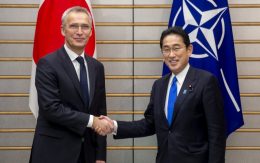
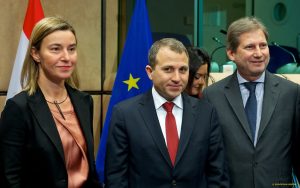
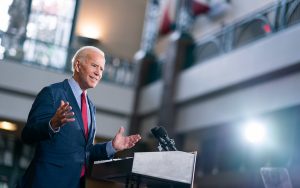
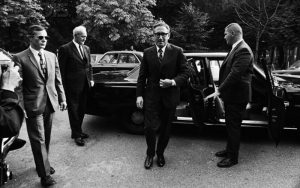
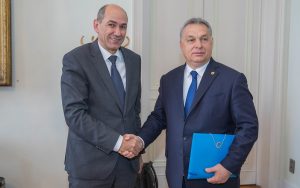

Be First to Comment